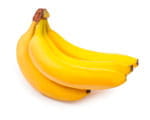The 5 days event of Langkawi Geopark Carnival 2011 was
celebrated with joy and happiness throughout the island. The event that
started from 31st of May was filled with educational and fun activities.
The opening of the carnival was held at Tuba Island where there were
about 2000 people from the Tuba Island and 200 people from the main
island of Langkawi having a feast under the program called 'Feast of The
People". People from both islands cooperated in preparing the food and
the place.
"Thanks to God, we have about 400 people that work together. Today feast
organized by LADA was really successful with the support from the
people of the main island of Langkawi and the people from Tuba Island,"
said Abdul Rani Awang, the Chairman of JKKP Tuba Barat, Tuba Island.
The second day of the carnival saw about 100 local people participated
in a free Guided Tour where the participants were given a tour to two
main Geoforest Park in Langkawi which were Kilim Karst Geoforest Park
and Dayang Bunting Marble Geoforest Park.
"By having this kind of Guided Tour, we provided tourist guide along the
journey where the local are introduced what Geopark is all about," said
Ikhwan Mohd Said, the Assistant Manager of Information at Geopark
Department.
"The Geopark Department really concern to share the knowledge to the
local people and we hope that this kind of exposure will help the local
people to get more information and at the same time they will start to
promote among their friends or among their relative that come to
Langkawi," said Othman Ayeb, one of the Langkawi nature guide with more
than 20 years of experience. He is also a snake expert and he was
featured as a snake handler in November 2001 edition of National
Geographic magazine.
Othman believed that the exposure about Geopark to the local people are very important for the future of Langkawi Geopark.
"We hope that our future generations of age 10 to 12 already can talk
about Geopark. They are not going to say, 'that is Machincang' but
they're going to say 'that is Machincang Cambrian which has limestone
formation during the Ordovician'," he added.
The Guided Tour helps the local to get to know and appreciate the
beautiful nature of Langkawi. The theme for this year's carnival is
'Savoring The Nature, Nurturing The Culture'.
"I hope the people here will keep the nature of Langkawi and being
polite to tourists. Here, we promote Langkawi as ecotourism, so the
people here must keep the nature of Langkawi so that they don't simply
cut the trees and spoil the water," said Dato' Azman Umar, the General
Manager of LADA.
"Geopark is not only about rock but it is more about people. If our
younger generation understand about our culture and our ancestor, I
think they are the one that will start to protect all these things,
forests, rock and nature, for their future generation," said Othman.
According to Ikhwan, all the activities planned in the carnival have its
own message that the organizer wanted to convey to people.
"As an example, the Geohunt on the third day of the carnival, where we
tried to promote certain locations in Langkawi so that people will get
familiar with the places in Langkawi," he said.
According to Mohamad Zuhri Abd Rashid, the Assistant Manager of
Conservative Unit at Geopark Department, the Geohunt applied the concept
of treasure hunt where participants had to answer the questions that
were based on the locations in Langkawi.
"We have the element of Geopark where participants have to answer the
questions related to Geopark. As an example, we are highlighting the
Machincang location where we have the oldest rock in Southeast Asia
which is 550 years old," said Zuhri.
The activities on the fourth and the last day concentrated mostly at
Dataran Lang where thousands of people came to see and take part in the
activities. There were more than 15 activities took place during the
carnival. Among the activities were futsal tournament, beach volleyball,
fruit carving, cultural performances, sales, bike fest and competition,
exhibition and many more.
The two days exhibition gave a chance for the people to get to know more about Geopark and the agencies involved.
"This carnival indirectly bring the community closer to understand the
role played by Minerals and Geoscience Department (JMG) and its close
relation with Langkawi Geopark," said Muhammad Mustadza Mazni, a Geology
Officer at Minerals and Geoscience Department (JMG) for Kedah, Perlis
and Penang.
"We work closely with LADA to recognize the locations that have
potential to become geological heritage for Geopark development and we
monitor and conserve the existed Geopark sites for the future
generation," he added.
Every four years UNESCO will reevaluate the status of its Global
Geopark. This year, the time has come for UNESCO to reevaluate the
status of Langkawi Geopark. Langkawi was accorded the Global Geopark
status by UNESCO on June 1st, 2007 for its significant geoheritage
feature consisting of stunning landscapes, majestic limestone karsts,
mysterious caves, sea-arches and stacks, glacial dropstones and fossils.
"With the activities and participation in this carnival, we can show to
UNESCO that Langkawi Geopark programs are supported by the people in
Langkawi," said Dato' Azman.
The UNESCO Global Geopark status puts Langkawi in good standing in
respect of nature conservation and sustainable development, outstanding
geoheritage, biodiversity as well as rich culture.
"I'm glad that Langkawi has the status of Geopark. Our island is known
worldwide even though our island is small. I'm proud to be born in
Langkawi," said Kalai Arasi, one of the visitors from Langkawi.
SOURCE:
http://www.langkawistory.com/
DEAR READERS!!
YOUR POSITIVE COMMENTS ARE HIGHLY APPRECIATE.
♥♥♥ FCU MALAYSIAN HOMESCHOOLING ♥♥♥






























 1. Artichokes
1. Artichokes 2. Bananas
2. Bananas 3. Beets
3. Beets 4. Cocoa
4. Cocoa 5. Garlic
5. Garlic